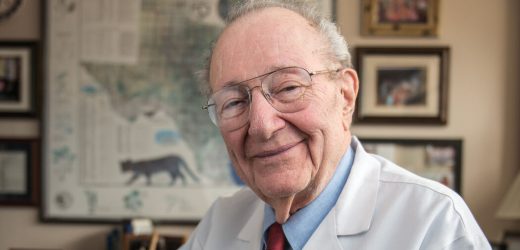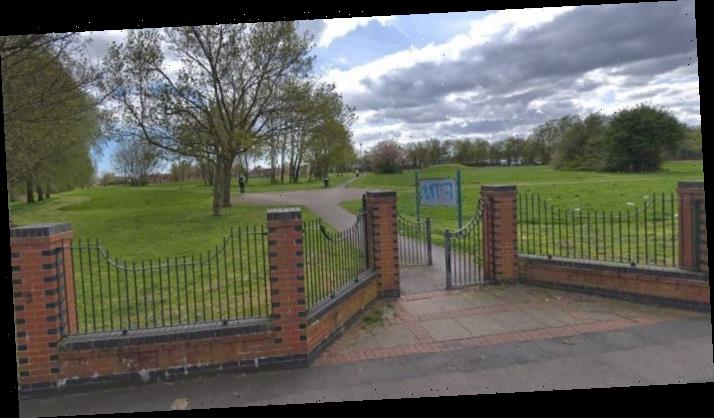Dr. Emil Freireich, a relentless cancer doctor and researcher who helped devise treatments for childhood leukemia that dramatically transformed the lives of patients thought to have little hope of survival, died on Feb. 1 at the University of Texas MD Anderson Cancer Center in Houston, where he had worked since 1965. He was 93.
His death was confirmed by his daughter Debra Ann Freireich-Bier. The hospital said he had tested positive for Covid-19 but it has not yet been determined as the cause of death.
Dr. Freireich was a transformational, magnetic and occasionally abrasive figure who spent his career at the National Cancer Institute and MD Anderson exploring for six decades new treatments for cancer and training hundreds of doctors to follow in his path.
“He oversaw research across all cancers, guiding and dictating the evolution of protocols, implementing them and publishing results that were adopted around the world,” said Dr. Hagop Kantarjian, chair of the leukemia department at MD Anderson.
When Dr. Freireich (pronounced FRY-rike) started work at the N.C.I., in Bethesda, Md., in 1955, acute childhood leukemia was considered a death sentence. Entering the ward where the children were being treated, he recalled their hemorrhaging because their blood had virtually no platelets, the disc-shaped cells that clot blood.
It was like an abattoir, his boss, Dr. C. Gordon Zubrod, told him.
“They bleed from out of their ears, from their skin,” Dr. Freireich told the author Malcolm Gladwell in “David and Goliath: Underdogs, Misfits and the Art of Battling Giants” (2013). “There was blood on everything. The nurses would come to work in the morning in their white uniforms and go home covered in blood.”
Dr. Freireich, a hematologist and oncologist, tested his hypothesis that the lack of platelets was causing the hemorrhaging by mixing some of his own blood with some of the children’s.
“Would it behave normally?” he said in interview for an N.C.I. oral history project in 1997. “Sure enough, it did.”
Further testing, done to persuade his skeptics at the cancer institute, proved him right.
But he had another problem: the blood that the children had been receiving lacked the platelets needed for their blood to clot because it was at least 48 hours old. The platelets had deteriorated and were useless.
Dr. Freireich argued successfully for the use of freshly donated blood that could be transfused as quickly as possible and did not languish in the institute’s blood bank. A minister who was the father of one of the patients once brought in 20 of his congregants to donate blood.
Looking for a more effective way to deliver platelets to his patients, Dr. Freireich began to design a machine to extract platelets from white and red blood cells. He soon found an unexpected ally in George Judson, an IBM engineer whose son had leukemia and had shown up at the institute to offer his expertise.
Soon they were collaborating on a continuous-flow blood separator that proved far more efficient at delivering platelets than blood transfusions. (The separator, which used a high speed centrifuge, was patented in 1966.)
But Dr. Freireich’s most important, enduring achievement was in using a combination of drugs to send leukemia into remission. He explored options in chemotherapy with several N.C.I. colleagues, including Dr. Emil Frei III, who was known as Tom.
They made an aggressive assault on childhood leukemia by devising a cocktail of four drugs that would be administered simultaneously — a technique similar to the three-drug regimen used to treat tuberculosis — so that each one would attack a different aspect of the physiology of the cancer cells.
“It was crazy,” Dr. Freireich told Mr. Gladwell. “But smart and correct. I thought about it and I knew it would work. It was like the platelets. It had to work!”
But not without peril and concern. Some of the children nearly died from the drugs. Critics called Dr. Freireich inhumane for experimenting with his young patients.
“Instead, 90 percent went into remission immediately,” he told USA Today in 2015. “It was magical.” But temporary. One round of the cocktail was not enough to eliminate all the cancer so Dr. Freireich and his team treated them with the drugs monthly for more than a year.
When he and Dr. Frei received the prestigious Albert Lasker Clinical Medical Research Award in 1972, the percentage of children who lived at least five years after their leukemia diagnosis was 30 percent. Today — using similar regimens that Dr. Freireich and Dr. Frei pioneered — the survival rate is 90 percent, according to the American Cancer Society. Dr. Frei died in 2013.
Emil J Freireich was born on March 16, 1927, in Chicago. His mother, Mary (Klein) Freireich worked long hours at a sweatshop after her husband, David, died when Emil was 2. He was put in the care of an Irish maid who became his surrogate mother. Soon after he turned 9, his mother remarried and quit her job; she and her new husband dismissed the maid.
“I never forgave my mother for that,” Dr. Freireich told Mr. Gladwell.
He excelled in physics in high school, where he won first prize in a science contest. His physics teacher encouraged him to go to college where his goal was to be a family doctor like the one who treated his family.
“He worked for nothing and always wore a suit and tie and always looked so dignified,” Dr. Freireich told the online publication of the American Society of Clinical Oncology in 2015.
After receiving a bachelor’s degree in medicine in 1947 from the University of Illinois, Chicago, he got his medical degree in 1949 from the university’s College of Medicine, also in Chicago.
His internship at Cook County Hospital, also in Chicago, ended after he confronted a nurse for putting a patient with heart failure in the so-called “dying room” rather than keeping him in the ward where Dr. Freireich had treated him. He was labeled a “troublemaker,” he said.
He then served his residency at nearby Presbyterian Hospital (now part of Rush University Medical Center), then moved to Boston for a fellowship at a hospital where he studied anemia. While there, he met a nurse, Haroldine Lee Cunningham, whom he married in 1953.
In 1953, he was drafted into the Army but was able to join United States Public Health Service and work at the N.C.I., an arm of the National Institutes of Health.
At their first meeting, Dr. Zubrod, his boss, asked him, “Freireich, what do you do?”
“I’m a hematologist,” Dr. Freireich recalled responding and watched as Dr. Zubrod scratched his head telling him, “Freireich, you should cure acute leukemia in children.”
And I said, “Yes, sir.”
After a decade of devising treatments for childhood leukemia at the N.C.I., Dr. Freireich (and Dr. Frei) were recruited to MD Anderson in 1965. Together they formed the Department of Developmental Therapeutics and hired scientists to develop drug combinations for various cancers, including adult leukemia, lymphoma and Hodgkin’s disease, using the same methodologies they used to treat childhood leukemia.
Because of Freireich’s larger-than-life personality and magnetism, he attracted people from all over the world to study with him,” Dr. Kantarjian said.
Dr. Freireich retired in 2015 but continued to teach and consult at MD Anderson.
Besides his wife and Ms. Freireich-Bier, Dr. Freireich is survived by another daughter, Lindsay Freireich; two sons, David and Tom; six grandchildren and three great-grandchildren.
Dr. Freireich analogized the early fight to cure childhood leukemia to being in a battle in which he and the N.C.I. team had an alliance that was “forged under fire.”
To cure cancer, he added: “Motivate people and give them the opportunity People are innately motivated. Nobody likes to be lazy and do nothing. Everybody wants to be significant.”
Source: Read Full Article



